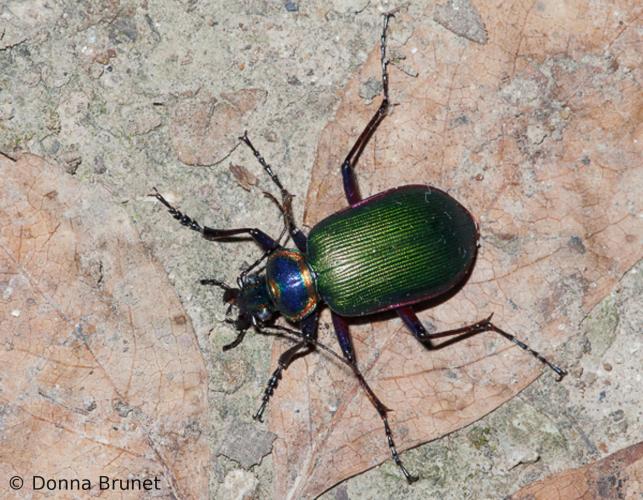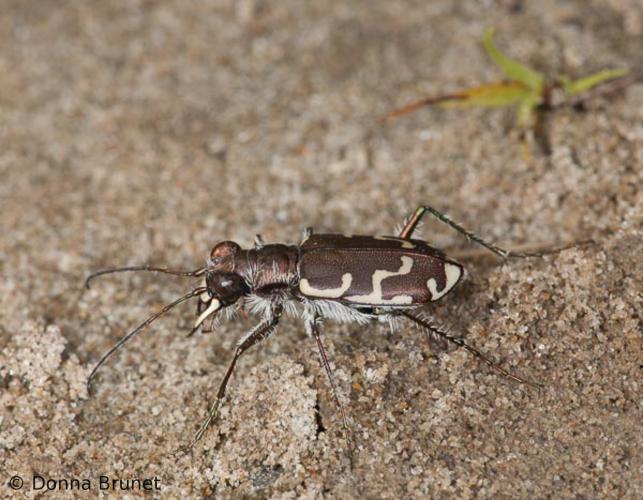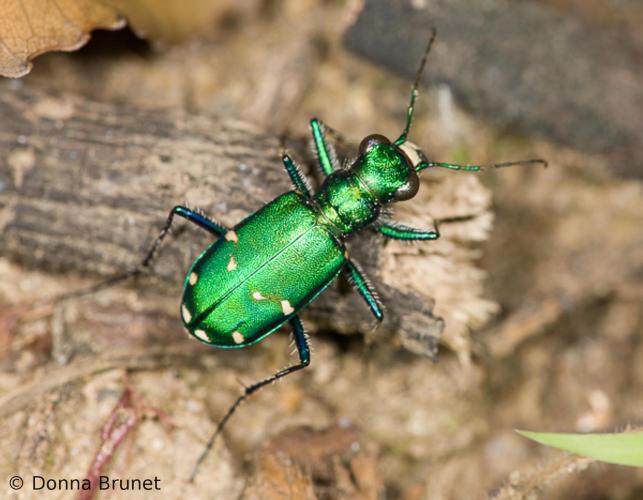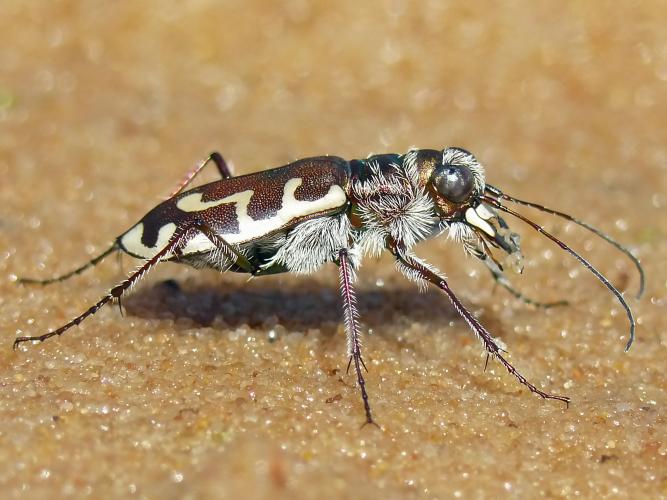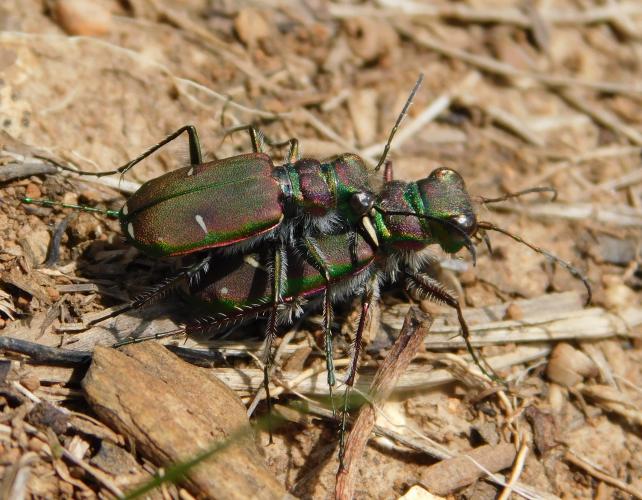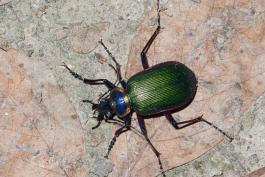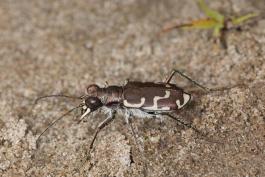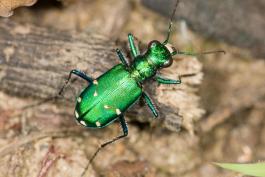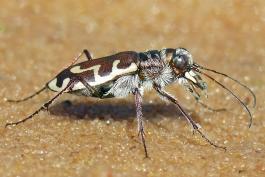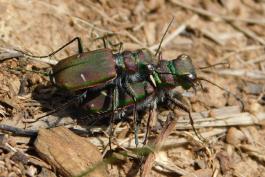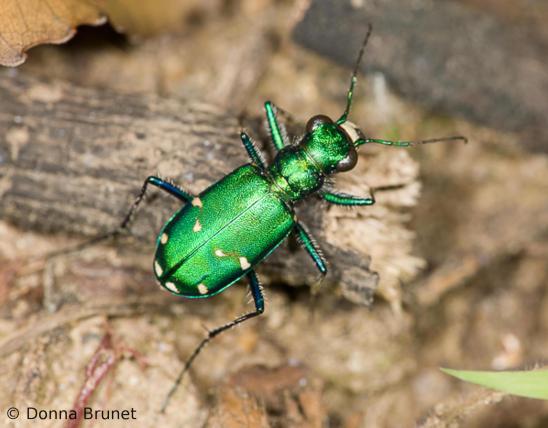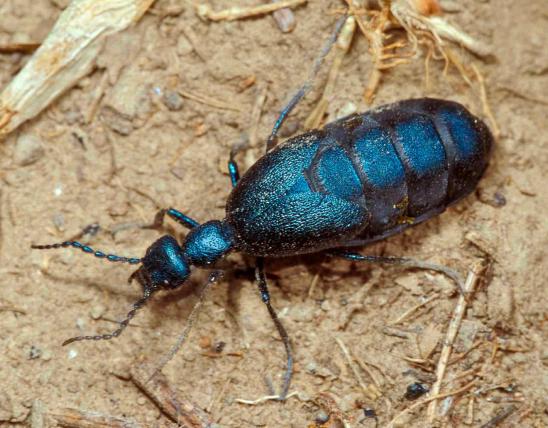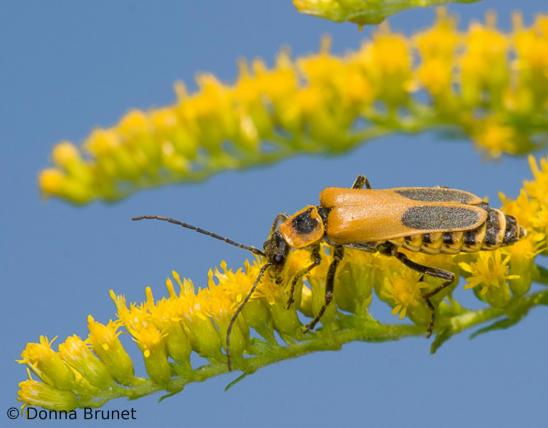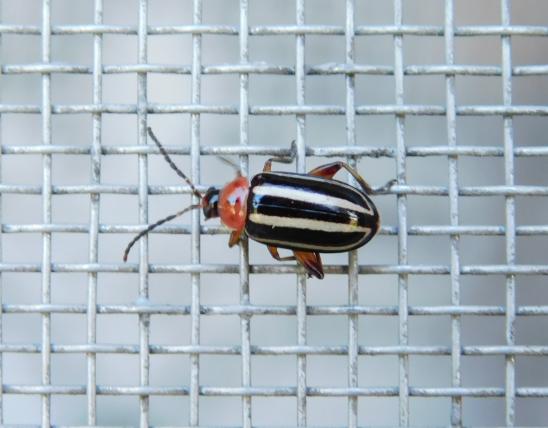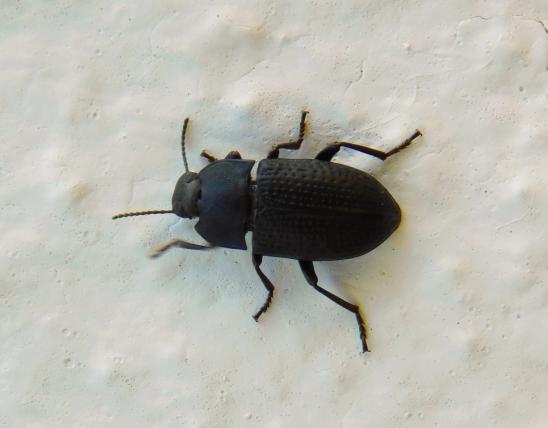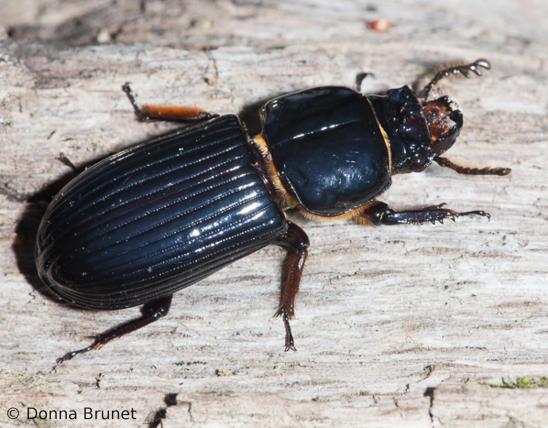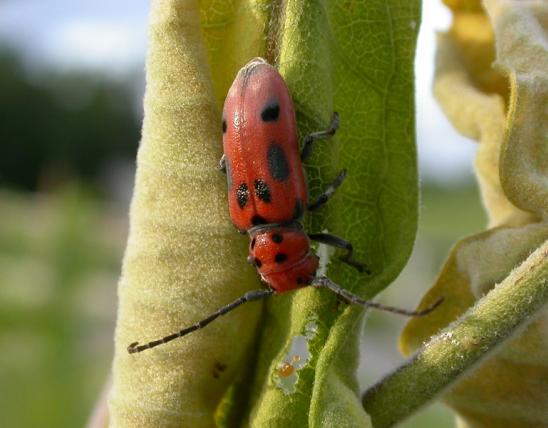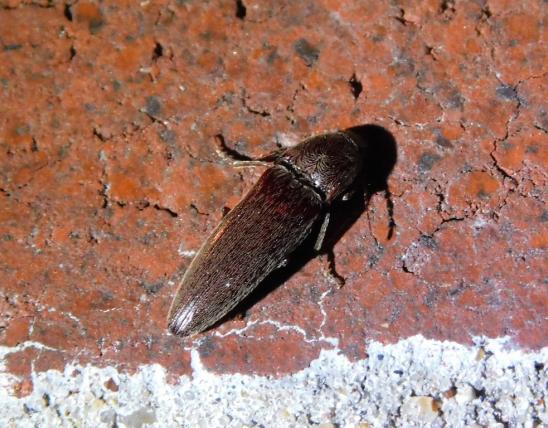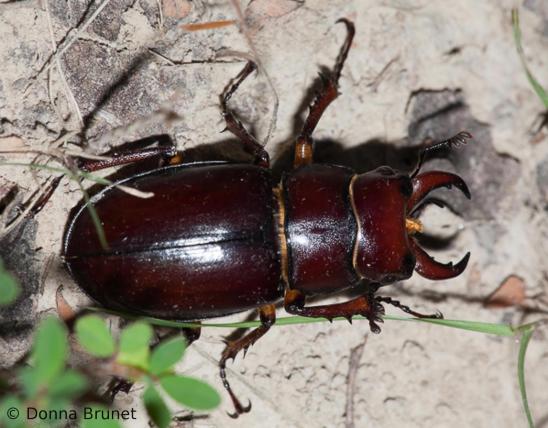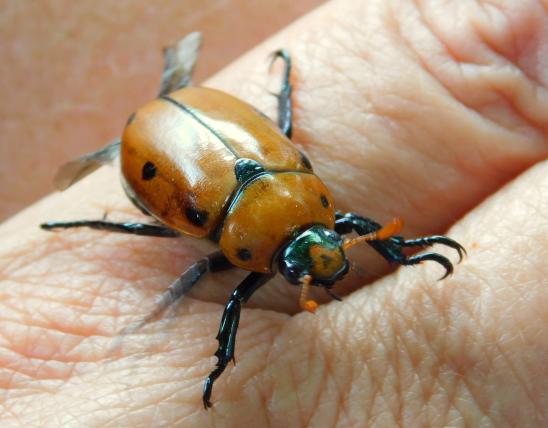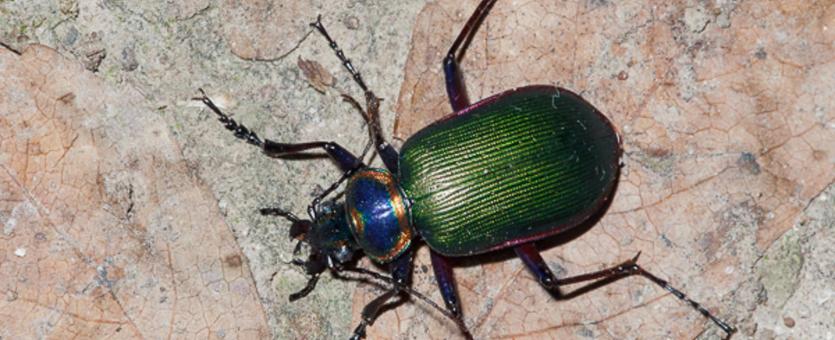
Like other beetles, ground beetles have shell-like wing covers (elytra) that meet in a straight line over their abdomen. Ground beetles are usually black or brown, often shiny, and often have lengthwise grooves on the elytra. Some are quite colorful. The jaws are well-developed. The legs are long and slender, and most ground beetles are fast runners. Many are nocturnal and hide in dark places during the day. If uncovered, they run quickly to find new shelter. Some species emit or spray foul or irritating chemicals in defense.
Tiger beetles are a subfamily of ground beetles that are more often brightly colored and active during the daytime.
The larvae are segmented; black, brown, tan, or pale; and worm- or grublike; with six legs; and have strong pincers at the mouth. Sometimes there’s a hump behind the head. If you are familiar with mealworms, they are rather similar to those.
Length: most are ¼ to ¾ inch, though some North American species reach 2 inches (varies with species).

Statewide.
Habitat and Conservation
Except for the tiger beetles, most ground beetles are nocturnal and seek dark places under debris. If you overturn a rock or log, you will probably see a few ground beetles rushing away. Most run along the ground, but they sometimes climb up trees seeking the caterpillars and other insects they eat. Many can fly and are attracted to lights at night. Some, notably the tiger beetles, are excellent daytime fliers and can been seen darting in and out of trails, sandbars, and other open areas.
Food
Both larvae and adults are predators. The adults run down prey insects, snatching them with their strong jaws. Some species are excellent fliers and can capture flying insects. Different species prefer different prey. Many hunt for caterpillars; others prefer slugs and snails. Some also eat fruit or seeds, or scavenge from dead material, as well. The larvae of some species are parasitic on other insects.
Life Cycle
The life cycles of this large family of beetles are as diverse as the beetles themselves. Like other beetles, they all undergo a complete metamorphosis, which means they have four growth stages: egg, larva (grub), pupa, and adult. As the larvae grow, they shed their skin a number of times until they are large enough to pupate. The adult (beetle) stage is the life stage when they are sexually mature. This is basically the same process that butterflies, flies, and bees go through.
Human Connections
Ground beetles are a great help to agriculture, since many of them feed on cutworms and other caterpillars and grubs that are injurious to crops. By feeding on larvae, they kill insects before they can reproduce.
People admire the iridescent colors of tiger beetles.
Ecosystem Connections
As predators, ground beetles help maintain the natural balance of insects in an ecosystem. Although many species use foul or pungent chemicals to ward off attackers, the larvae and eggs are vulnerable to many predators.
